Truman Capote

Writer • Actor
Birth Date: September 30, 1924
Death Date: August 25, 1984
Birth Place: New Orleans, Louisiana
A literary genius who crafted tight, flawless prose and displayed keen insight into human nature, author Truman Capote belied his level-headed approach to writing by adopting a flamboyant public persona. Capote was the toast of high society and one of literature's most promising young authors when he emerged with two of his most revered novels, Other Voices, Other Room (1948) and The Grass Harp (1951). His literary prowess grew with arguably his best work of fiction, Breakfast at Tiffany's (1958), which introduced the world to the independent and social-climbing Holly Golightly. But Capote reached his greatest achievement with In Cold Blood (1966), a "non-fiction novel" that covered the gruesome murder of the Clutter family in Holcomb, KS, which was hailed as a groundbreaking work in the true crime genre. But by the time of his premature death in 1984, Capote had lost his social and literary appeal, thanks in large part to crippling drug and alcohol addiction. Capote attributed much of his personal decline to being snubbed by his jet set friends after he wrote several damning stories for Esquire magazine. But some believe his slide into personal destruction was traced to writing In Cold Blood, which nonetheless turned Capote into an international star and enhanced his reputation as one of the 20th century's finest literary talents.
Capote was born Truman Streckfus Persons on Sept. 20, 1924 in New Orleans, LA. His father, Archulus Persons, worked as a clerk and salesman at the family-owned Streckfus Steamboat Line, and his mother, Lillie Mae Faulk, was a former Miss Alabama prone to drinking cheap liquor and wallowing in depression. Four years after Capote was born, his parents divorced and he was sent to Monroeville, AL to be raised by various relatives, including an elderly great-aunt named Miss Sook Faulk, who later became a haunting recurring character in his fiction. At eight years old, Capote decided to become a writer and began working obsessively after school once he got his first typewriter. He enlisted best friend Nelle Harper Lee, later author of To Kill a Mockingbird (1960), to help type his manuscripts. Echoes of his later controversies surfaced at 10 years old after he submitted a roman a clef called "Old Mr. Busybody" to a children's writing contest held by the Mobile Press-Register. Though a second installment was ready to print, someone had recognized that he was passing off a local scandal as fiction and the second part never appeared. He also failed to win a prize.
His mother later remarried a well-to-do businessman, Joseph García Capote, who adopted her son as after he joined them in New York City in 1933. A few years later, his mother committed suicide for reasons Capote refrained from talking about. Meanwhile, he began his formal education in New York, attending Trinity and Dwight before moving on to Greenwich High School in Connecticut, where he wrote for the school newspaper, The Beak. At 17, Capote put a stop to his schooling and went to work in the art department and mailroom at the New Yorker magazine. Never shy about his eccentricities or his homosexuality, Capote made an indelible impression - he would wear Brooks Brothers suits with moccasins one day, a flowing red cape the next. He also liked taking matters into his own hands, whether it was opening manuscript submissions and throwing away ones he disliked, or tipping off the wife of the magazine's blind artist to his many affairs by turning his socks inside-out after being dispatched to help him dress. Capote was fired from the New Yorker when an incredulous Robert Frost complained to founding editor Harold Ross that he was insulted by Capote when he walked out of a reading. Capote's excuse that he was sick failed to win acceptance.
Shortly after he was fired from the New Yorker, Capote began publishing short stories in Mademoiselle, Harper's Bazaar and other magazines, and his story "Miriam" won an O. Henry Award in 1946, turning him into a local celebrity and a fixture on the party circuit. "Miriam" attracted the attention of editor Robert Linscott at Random House, who told Capote he would publish anything the young author wanted to write. Returning to his Southern roots, Capote wrote Other Voices, Other Room (1948), a semi-autobiographical coming-of-age tale about Joel Knox, a 12-year-old boy sent to Alabama to live with his estranged father after the death of his mother, only to find his stepmother and eccentric cousin living in a decaying mansion. Meanwhile, he befriends a defiant little girl named Idabel - a stand-in for real-life friend Harper Lee -who gives Joel the love and attention he needs. Only 23 when published, Capote enjoyed critical praise and best-selling status right from the start, enhancing his prominent status with New York's smart set.
After the success of Other Voices, Other Rooms, Capote relocated to Italy and began work on his second novel, The Grass Harp (1951), a fantastical tale set in a small Southern town about an orphaned boy and two whimsical old ladies who discover the value of love and freedom after taking residence in a tree. In 1952, The Grass Harp was adapted for Broadway, but proved unsuccessful. Capote soon entered Hollywood circles and wrote the screenplay for "Beat the Devil" (1953), a satirical adventure directed by John Houston and starring Humphrey Bogart as a shady adventurer trying to smuggle uranium out of East Africa with four cohorts. Though in later years the film earned cult status, it was a resounding failure at the box office at the time of its release. He again tried his hand at the stage, collaborating with songwriter Harold Arlen on the musical "House of Flowers" (1954), but was handed another failure. Returning to novels, Capote detailed his amusing travels in the Soviet Union while accompanying a tour of "Porgy and Bess," resulting in his first attempt at nonfiction, The Muses Are Heard (1956). After publishing the beloved short story "A Christmas Memory" in Mademoiselle, Capote again became a bestseller with Breakfast at Tiffany's (1958), a short novel about an independent and social-climbing woman named Holly Golightly. The story was adapted into a movie in 1961, but Capote felt Audrey Hepburn was wrong for the part despite her Academy Award nomination for Best Actress.In 1959, Capote found a 300-word article tucked away in the New York Times detailing a grisly quadruple murder in Kansas. Fascinated by the story, he convinced New Yorker editor William Shawn to put him on assignment. Though an outsider from cosmopolitan New York in a small rural town, Capote - who brought along Harper Lee as his research assistant - spent the next six years interviewing friends, neighbors and the two imprisoned murderers, Richard Hickock and Perry Edward Smith. Capote developed a strange, but familiar bond with the artistic and sensitive Smith - both shared almost identical childhoods - but he stepped over the line of observer and inserted himself into the story by offering financial assistance for their numerous court appeals. Many close to Capote felt he wanted to milk their stories; others felt his relationship with Smith developed into a love that drove him to help. Capote later maintained that all involved knew the appeals would fail because of the sworn confessions from the killers. Eventually Capote pulled his financial support and the two men were sent to the gallows at Kansas State Penitentiary, giving the author a much-needed ending for his book. He witnessed the executions at the request of both Hickock and Smith, an event that haunted him for the rest of his days.
Published in 1966, In Cold Blood made Capote an international celebrity. As a celebration of his success, he threw the famous "Black and White Ball" at New York's Plaza Hotel that same year. Everyone from Mia Farrow and then-husband Frank Sinatra to Lauren Becall and Norman Mailer - icons from all corners of American society - attended what was later regarded as one of the greatest parties of the 20th century. Meanwhile, "In Cold Blood" was turned into an acclaimed docudrama in 1967, written and directed by Richard Brooks and starring Robert Blake - who would himself be arrested for murder years later - as Smith and Scott Wilson as Hickock. Academy Award nominations were given for Best Director and Best Adapted Screenplay. Though his fame and social status were never more robust, Capote's psychological health was on the decline. The toll he paid for witnessing the hangings after having kept the killers alive was severe. Capote became depressed, dependent on drugs and alcohol, and undisciplined with his writing. He would never finish another novel.Capote's jet setting and late night television appearances occupied most of his post-In Cold Blood career. The man practically lived at the disco nightclub Studio 54 at the height of its late 1970s heyday. He did start work on Answered Prayers, a trash heap of a book that boiled over with venomous gossip about many of his society friends with nary a pseudonym to conceal the racy goings-on. Several of the stories were published in Esquire magazine in 1975 and 1976, much to the horror of those depicted by the author. The unfinished novel found its way to posthumous publication in 1986. Ostracized by friends, which added to his depression and alcohol dependence, Capote appeared in "Murder By Death" (1976), an all-star murder spoof in which he played Lionel Twain, a wealthy recluse who gathers the world's most famous mystery writers to his isolated mansion to solve a murder. Written by Neil Simon and co-starring Peter Sellers, Maggie Smith and Peter Falk, "Murder By Death" marked the first and last fictional role Capote played on screen. Meanwhile, he delivered his final publication while alive, a collection of short stories, interviews and conversations from various magazines called Music for Chameleons (1981). As his waning years advanced, Capote became more reclusive and his behavior bordered on the bizarre. Then on Aug. 24, 1984, Capote died in Los Angeles from liver disease complicated by phlebitis and multiple drug intoxication with longtime companion, writer Jack Dunphy, at his side. He was 59.
As natural for any celebrity, interest in Capote's life and work amplified after his death. In 1992, playwright Jay Presson Allen wrote the one-man Broadway show, "Tru," which starred a revived Robert Morse as Capote in a Tony Award-winning performance. "One Christmas" (NBC, 1994), Capote's heart-warming tale set in 1930 about a shy boy who leaves Alabama to spend Christmas with his estranged father in New Orleans, was adapted into a movie-of-the-week starring Katherine Hepburn and Henry Winkler. In 1995, both "The Grass Harp" and "Other Voices, Other Rooms" were made into low-budget features. Patty Duke and Piper Laurie then starred in "A Christmas Memory" (CBS, 1997), Capote's 1956 short story about a young boy and his older cousin preparing to spend their last Christmas together. In 2005, Philip Seymour Hoffman gave a stunning, Oscar-winning performance as the author in "Capote," director Bennett Miller's biopic that focused on his writing of In Cold Blood. Miller's first feature was lauded by critics, though it found tough footing at the box office. Nonetheless, "Capote" was regarded as a subtle and well-crafted portrait of a complex and erratic man who remained eternally fascinating long after his death.
Credits

The David Susskind Archives: Truman Capote Tells All

Love, Marilyn

Children on Their Birthdays

Murder by Death
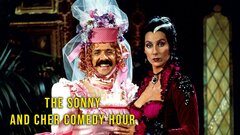
The Sonny & Cher Comedy Hour

The Thanksgiving Visitor

The Dick Cavett ShowStream

The Dick Cavett ShowStream
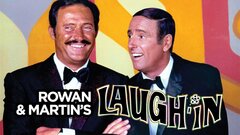
Rowan & Martin's Laugh-InStream

Laura
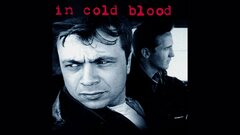
In Cold BloodStream
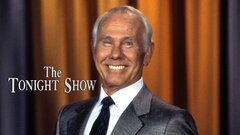
The Tonight Show Starring Johnny CarsonStream

Breakfast at Tiffany'sStream
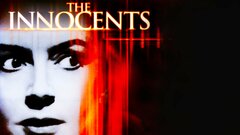
The Innocents
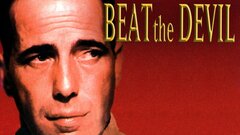
Beat the DevilStream








